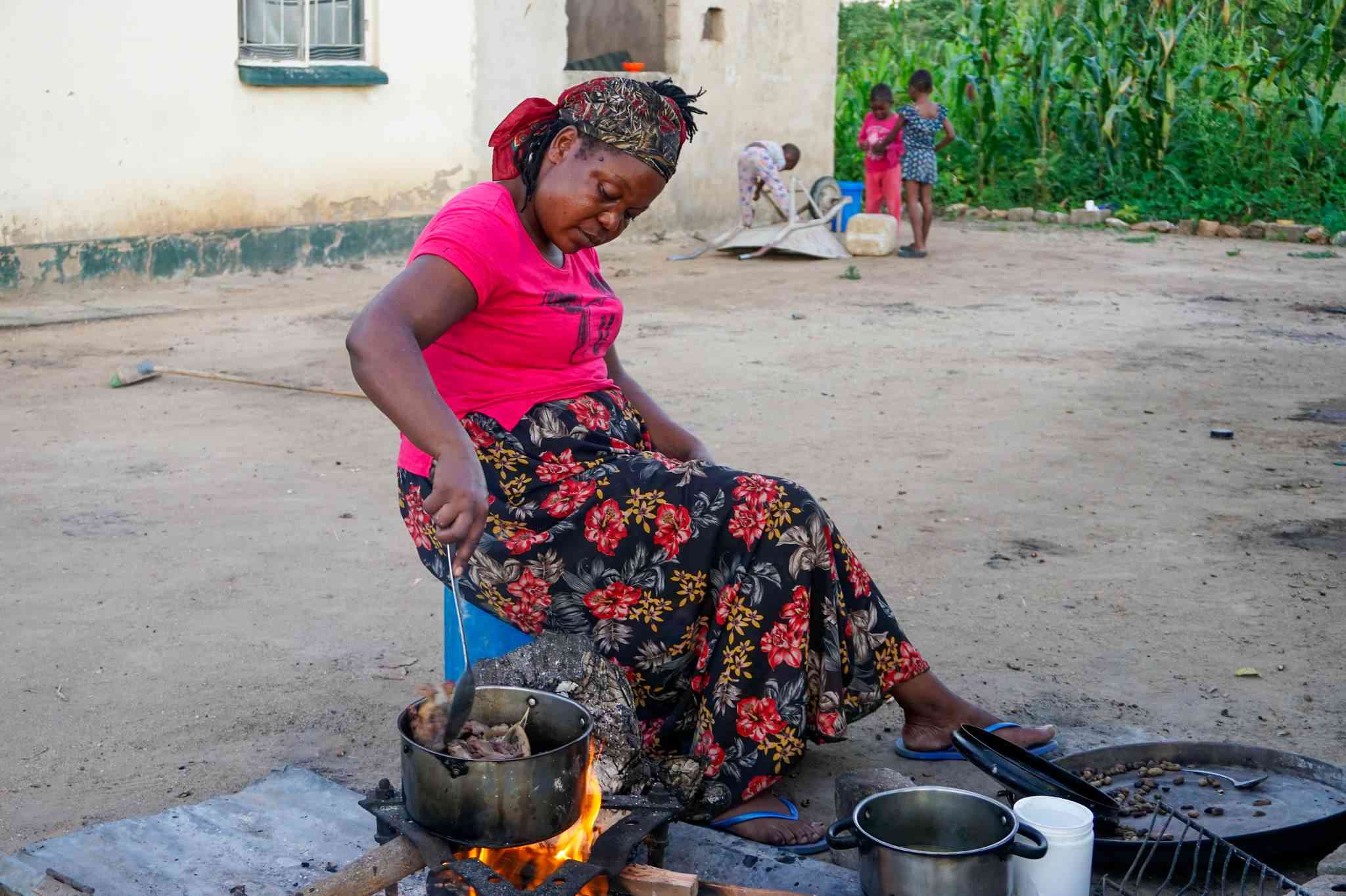
ZVISHAVANE, ZIMBABWE — Morning light slants through the window as Eneles Zhou inspects two of her children. They’re wrapped in blankets. Despite March’s typically warm days, in this home in the Midlands province, Zhou’s children struggle with temperatures their bodies cannot regulate.
A mother of five, Zhou quickly coaxes flames to life and prepares porridge, timing it with the children’s medication schedule — folic acid to boost red blood cells, then hydroxyurea to prevent any complications. Over the years, this routine has become familiar.

When her firstborn was diagnosed with sickle cell anemia, a hereditary disease, at 7 years old, Zhou had never heard of it. Doctors told her that 1 in 4 children might inherit it, and with two symptom-free, she clung to hope.
But by 2021, tests had confirmed that three of her children carry a severe form of the disease. Two others have a milder version.
Zimbabwe’s widespread failure to screen newborns means many families only discover the condition after irreversible damage has begun. Without early detection, children often suffer severe complications or die, even before the age of 5, says Dr. Patience Kuona, a pediatric hematologist who’s spearheading a sickle cell research initiative.
In 2024, Zimbabwe launched its first pilot screening program, testing 550 newborns and revealing that the sickle cell trait affects between 3% and 12% of the population.

The data is not yet published, says Kuona, the lead researcher.
- Childhood on the Brink in Zimbabwe’s Midlands
Keep Reading
Still, the pilot — part of ongoing research by the Sickle Hemoglobinopathy Research in Zimbabwe and Zambia — marks only the beginning of a much longer journey for those with the disease.
Specialized care, especially for families outside major cities, remains a mirage.
Essential medicines — folic acid, penicillin, hydroxyurea — are often unavailable in public health facilities. Advanced treatments such as bone marrow transplants and gene therapy are not available due to resource constraints. Specialized sickle cell disease clinics exist in five central hospitals, with limited provincial access.
“Pain relief is there, but opioids are scarce in lower-level hospitals,” Kuona says.
Sickle cell disease, the world’s most common inherited blood disorder, warps healthy cells into crescents. The sickle cells break down easily, leading to anemia. They can also clog small blood vessels, causing excruciating pain and organ damage.
Globally, 7.74 million people bear this genetic burden. Over half a million children were born with the disease in 2021. While Zimbabwe’s 12% prevalence rate appears modest compared to hot spots like Nigeria, Uganda and Democratic Republic of Congo, where rates soar to between 20% and 45%, the country’s fragile health care infrastructure magnifies suffering, turning what should be a manageable condition into a daily battle for survival.
Zhou’s case is especially challenging. Her five affected children are different ages —one adolescent, two teenagers and two preschoolers — and the complications worsen as children grow, with higher risks of infections, kidney problems, blood clots and stroke.
Zhou’s eldest, Panashe Sibanda, 20, has endured the worst. Despite six daily medications, he is constantly in pain. He struggles to sustain friendships. He can’t join gatherings because pathogens infect him too easily. A simple cold triggers what he calls a “pain crisis,” which no over-the-counter painkiller can relieve.
For 1 in 3 people with sickle cell disease, pain is a near-daily companion. More than half grapple with pain most days.
“I’ve survived 61 near-death experiences since I was 13,” Sibanda says.
The disease burdens families financially through frequent hospitalizations and work loss. Zhou’s husband’s irregular carpentry work barely sustains them. Zhou doesn’t work outside her home; her children’s disease requires full-time care.
During her children’s playtime, Zhou remains alert. These aren’t carefree moments of childhood abandon; they’re carefully monitored sessions within the confines of their immaculate home. One dust mote could trigger an infection.
“I am always nervous,” she says. “Always anxious.”
- This story was originally published by Global Press Journal.










